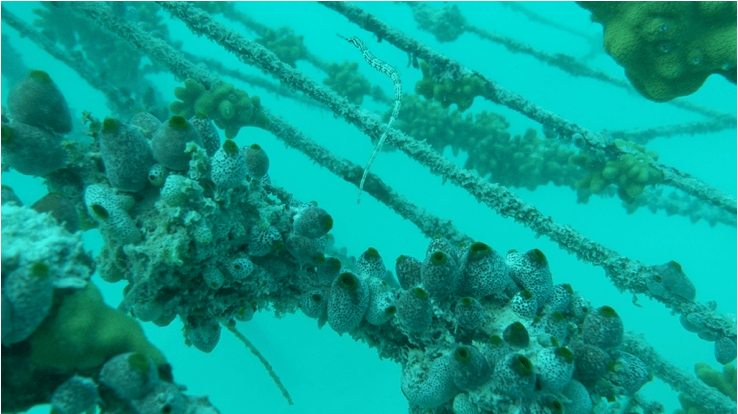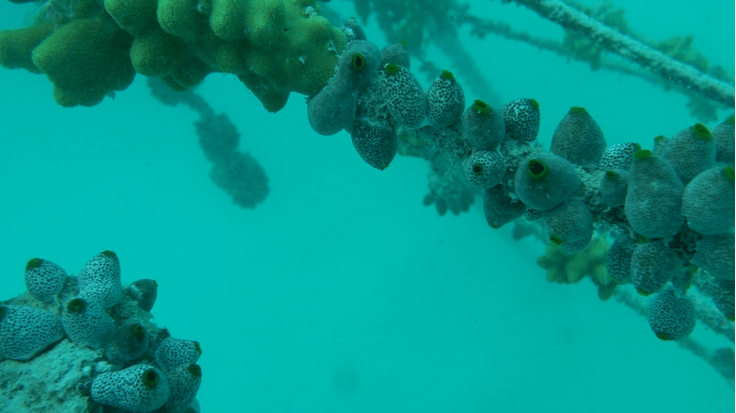Here at Gili Lankanfushi we are constantly in the process of maintaining our Coral Lines Project in the lagoon. Using our scuba diving expertise, we spend many hours measuring and cleaning our existing coral lines as well as planting new ones.
It is always a shock to notice how quickly marine creatures and algae recolonize the lines after we have cleaned them! Keeping the lines clean is incredibly important for the growth of our small coral fragments. Removing algae and tunicates allows to corals to receive the maximum amount of sunlight and nutrients. One of the biggest pests of the coral lines is the Green Barrel Sea Squirt (Didemnum molle). These tunicates grow in grape-like bunches around the lines and crowd the coral fragments, sometimes even colonizing the corals themselves too!

While the corals are our priority, and for their health we must remove these sea squirts from the lines, the green barrel sea squirts are fascinating creatures in their own right! These sea squirts grow up to only 3 cm, and are commonly found throughout the Indo-West Pacific. The small white wobbly bulbs are filled with a bright green sticky mucus, which makes them very eye-catching! This green colour occurs because the sea squirt has a very close symbiotic relationship with a type of bacteria known as cyanobacteria (Prochloron genus), which are bright green in colour due to the chlorophyll pigments they use for photosynthesis. The bacteria make sugars using the sun’s energy, some of which are then fed to their sea squirt protectors.
Amazingly, the sea squirts possess their own type of sunscreen, which helps protect their symbiotic cyanobacteria living inside them from receiving too much damaging light! This sunscreen comes in the form of mycosporins, which are molecules that absorb and filter out ultra-violet radiation.
As well as using sugars from photosynthesis from their cyanobacterial friends, the sea squirt feeds on plankton and debris floating in the water. The sea squirts draw water and particles in through pores that are dotted all over the outside of their white bodies and push the remaining excess water out through their one large bright green opening at the top.
The green barrel sea squirts are hermaphrodites (individuals can produce both eggs and sperm). They can reproduce asexually by budding off new clones of themselves. They can also reproduce sexually by receiving sperm from other individuals. Fertilization takes place in the body cavity. A clutch of eggs is fertilized by sperm drawn in with the water stream. The embryos are incubated for only a few days before the tadpole-like larvae emerge and are released into the water. These larvae quickly settle and cement themselves to available surfaces and start new colonies.
This ease with which the green barrel sea squirts can reproduce is a credit to them as a species, but also a huge nuisance for our coral lines project! As we continue to remove from our coral lines with mild annoyance, we can appreciate the effort and complexity of their existence and evolution to be as successfully adapted to their environment as they are today!
